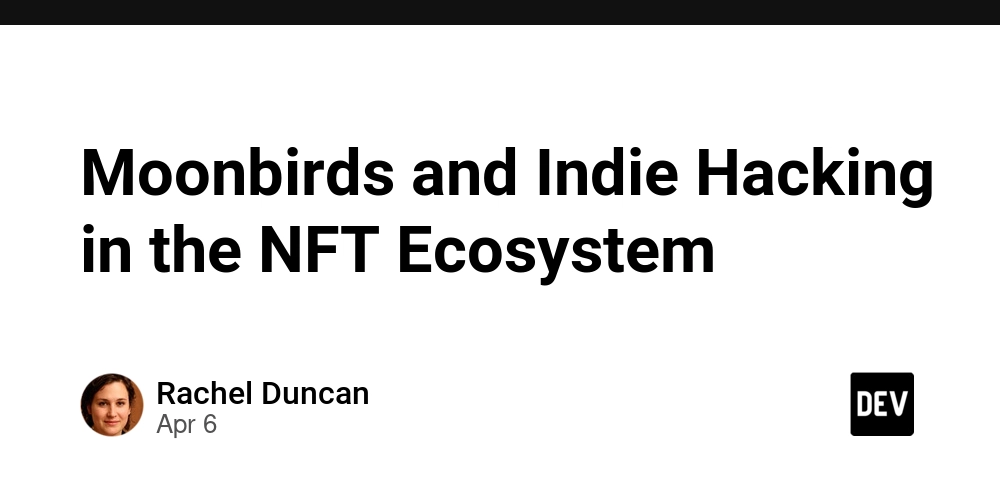The Glittering Climb: Decoding Gold Prices on March 6, 2025
Introduction: A Golden Moment in Time As the sun rises on March 6, 2025, the world of finance finds itself captivated once again by the enduring allure of gold. The precious metal, long revered as a symbol of wealth and stability, has surged to unprecedented heights, leaving investors, analysts, and casual observers alike scrambling to understand the forces driving this latest "golden climb." Today, gold prices hover near record levels, with spot gold trading at approximately $2,987 per ounce—a figure that reflects both the metal’s resilience and the swirling uncertainties of our global landscape. This article delves into the intricate web of factors propelling gold’s ascent as of March 6, 2025, offering a comprehensive look at why this ancient asset continues to shine in a modern world. The past year has been nothing short of extraordinary for gold. In 2024, the metal posted gains exceeding 26%, shattering previous records and crossing the $2,900 mark for the first time in late February 2025. Now, just days into March, the momentum shows no signs of abating. From geopolitical tensions to economic policies under a newly inaugurated U.S. administration, gold’s story in 2025 is a tapestry woven with threads of fear, opportunity, and strategic foresight. Let’s unpack this glittering phenomenon, exploring the catalysts, the consequences, and what might lie ahead for the yellow metal. The Backdrop: A World in Flux To understand gold’s rise on March 6, 2025, we must first set the stage with the global conditions shaping its trajectory. The year began with a seismic shift in the United States, as Donald Trump was sworn in as president on January 20, 2025, marking his return to the White House. His administration’s early moves—particularly a renewed focus on tariffs and trade protectionism—have sent ripples through global markets. Proposed tariffs on imports from China and other key trading partners have heightened fears of inflation, prompting investors to seek refuge in safe-haven assets like gold. Meanwhile, across the Atlantic, Europe grapples with its own challenges. The ongoing war in Ukraine, now in its third year, continues to destabilize energy markets and stoke inflationary pressures. In Asia, tensions around Taiwan persist, with China’s military posturing adding another layer of geopolitical risk. These flashpoints collectively underscore gold’s timeless appeal: when the world feels unsteady, the metal shines brightest. Economic factors, too, play a pivotal role. The U.S. Federal Reserve, under pressure from Trump’s fiscal agenda, has signaled a cautious approach to interest rate cuts in 2025. After slashing rates by 50 basis points in late 2024, the Fed now faces a delicate balancing act—supporting growth while taming inflation, which ticked up to 3.2% in February 2025. Lower interest rates typically reduce the opportunity cost of holding gold, a non-yielding asset, making it more attractive to investors. Yet, the specter of rising deficits under Trump’s proposed tax cuts and infrastructure spending has analysts warning of long-term fiscal strain, further boosting gold’s allure as a store of value. The Numbers: Gold’s Meteoric Rise As of this morning, March 6, 2025, gold’s spot price stands at $2,987 per ounce, according to data from the London Bullion Market Association. This marks a 1.2% increase from yesterday’s close and a staggering 11.8% gain since the start of the year. In India, a major gold-consuming market, prices for 10 grams of 22-carat gold have climbed to ₹81,200, reflecting both global trends and heightened local demand ahead of the spring wedding season. Meanwhile, futures contracts on the COMEX exchange suggest traders are betting on gold breaching $3,000 by mid-March—a psychological threshold that could trigger even greater momentum. The numbers tell a story of relentless upward pressure. In Visakhapatnam, India, a report from Hello Vizag on March 5 noted that 24-carat gold hit ₹87,980 per 10 grams, up ₹600 from the previous day. This local surge mirrors a broader trend: gold exchange-traded funds (ETFs) globally have seen inflows of over 120 tonnes since January, reversing a period of outflows in late 2024. Central banks, too, remain voracious buyers. The World Gold Council estimates that global central bank purchases exceeded 1,100 tonnes in 2024, with another 80 tonnes added in the first two months of 2025 alone. The People’s Bank of China, resuming its gold-buying spree in November 2024 after a brief pause, added 15 tonnes in January and February combined, signaling a strategic shift amid trade tensions with the U.S. The Drivers: Why Gold Is Soaring What’s fueling this golden surge? The answer lies in a confluence of forces, each amplifying the others in a feedback loop of demand and sentiment. Geopolitical Uncertainty The world in 2025 feels like a powder keg. Beyond Ukraine and Taiwan, the Middle East remains a tinderbox, with Israel-Iran tensions flaring anew in ear

Introduction: A Golden Moment in Time
As the sun rises on March 6, 2025, the world of finance finds itself captivated once again by the enduring allure of gold. The precious metal, long revered as a symbol of wealth and stability, has surged to unprecedented heights, leaving investors, analysts, and casual observers alike scrambling to understand the forces driving this latest "golden climb." Today, gold prices hover near record levels, with spot gold trading at approximately $2,987 per ounce—a figure that reflects both the metal’s resilience and the swirling uncertainties of our global landscape. This article delves into the intricate web of factors propelling gold’s ascent as of March 6, 2025, offering a comprehensive look at why this ancient asset continues to shine in a modern world.
The past year has been nothing short of extraordinary for gold. In 2024, the metal posted gains exceeding 26%, shattering previous records and crossing the $2,900 mark for the first time in late February 2025. Now, just days into March, the momentum shows no signs of abating. From geopolitical tensions to economic policies under a newly inaugurated U.S. administration, gold’s story in 2025 is a tapestry woven with threads of fear, opportunity, and strategic foresight. Let’s unpack this glittering phenomenon, exploring the catalysts, the consequences, and what might lie ahead for the yellow metal.
The Backdrop: A World in Flux
To understand gold’s rise on March 6, 2025, we must first set the stage with the global conditions shaping its trajectory. The year began with a seismic shift in the United States, as Donald Trump was sworn in as president on January 20, 2025, marking his return to the White House. His administration’s early moves—particularly a renewed focus on tariffs and trade protectionism—have sent ripples through global markets. Proposed tariffs on imports from China and other key trading partners have heightened fears of inflation, prompting investors to seek refuge in safe-haven assets like gold.
Meanwhile, across the Atlantic, Europe grapples with its own challenges. The ongoing war in Ukraine, now in its third year, continues to destabilize energy markets and stoke inflationary pressures. In Asia, tensions around Taiwan persist, with China’s military posturing adding another layer of geopolitical risk. These flashpoints collectively underscore gold’s timeless appeal: when the world feels unsteady, the metal shines brightest.
Economic factors, too, play a pivotal role. The U.S. Federal Reserve, under pressure from Trump’s fiscal agenda, has signaled a cautious approach to interest rate cuts in 2025. After slashing rates by 50 basis points in late 2024, the Fed now faces a delicate balancing act—supporting growth while taming inflation, which ticked up to 3.2% in February 2025. Lower interest rates typically reduce the opportunity cost of holding gold, a non-yielding asset, making it more attractive to investors. Yet, the specter of rising deficits under Trump’s proposed tax cuts and infrastructure spending has analysts warning of long-term fiscal strain, further boosting gold’s allure as a store of value.
The Numbers: Gold’s Meteoric Rise
As of this morning, March 6, 2025, gold’s spot price stands at $2,987 per ounce, according to data from the London Bullion Market Association. This marks a 1.2% increase from yesterday’s close and a staggering 11.8% gain since the start of the year. In India, a major gold-consuming market, prices for 10 grams of 22-carat gold have climbed to ₹81,200, reflecting both global trends and heightened local demand ahead of the spring wedding season. Meanwhile, futures contracts on the COMEX exchange suggest traders are betting on gold breaching $3,000 by mid-March—a psychological threshold that could trigger even greater momentum.
The numbers tell a story of relentless upward pressure. In Visakhapatnam, India, a report from Hello Vizag on March 5 noted that 24-carat gold hit ₹87,980 per 10 grams, up ₹600 from the previous day. This local surge mirrors a broader trend: gold exchange-traded funds (ETFs) globally have seen inflows of over 120 tonnes since January, reversing a period of outflows in late 2024. Central banks, too, remain voracious buyers. The World Gold Council estimates that global central bank purchases exceeded 1,100 tonnes in 2024, with another 80 tonnes added in the first two months of 2025 alone. The People’s Bank of China, resuming its gold-buying spree in November 2024 after a brief pause, added 15 tonnes in January and February combined, signaling a strategic shift amid trade tensions with the U.S.
The Drivers: Why Gold Is Soaring
What’s fueling this golden surge? The answer lies in a confluence of forces, each amplifying the others in a feedback loop of demand and sentiment.
Geopolitical Uncertainty
The world in 2025 feels like a powder keg. Beyond Ukraine and Taiwan, the Middle East remains a tinderbox, with Israel-Iran tensions flaring anew in early March after a series of drone strikes. Investors, wary of escalation, are piling into gold as a hedge against chaos. As J.P. Morgan strategist Gregory Shearer noted in a February 19 update, “Gold’s diverse demand drivers mean it thrives in both falling and rising yield environments, making it an ideal shield for political uncertainty in 2025.” The metal’s role as a geopolitical insurance policy has never been more pronounced.Inflation and Currency Concerns
Inflation, while cooling from its 2022 peak, remains a stubborn foe. In the U.S., Trump’s tariff threats—potentially adding 20% duties on Chinese goods—could drive consumer prices higher, eroding the dollar’s purchasing power. Globally, the trend toward de-dollarization accelerates, with BRICS nations (Brazil, India, China, South Africa) exploring gold-backed trade mechanisms. As faith in fiat currencies wavers, gold emerges as a tangible counterweight.Central Bank Buying
Central banks are not just passive observers—they’re active players. The Reserve Bank of India, the Central Bank of Turkey, and the National Bank of Poland have joined China in stockpiling gold, driven by a desire to diversify away from U.S. dollar-denominated assets. This “gold rush” among sovereigns creates a floor under prices, as their purchases—often conducted off-market—absorb supply that might otherwise dampen the rally. Goldman Sachs Research, in a September 2024 forecast, predicted gold would hit $2,700 by early 2025; today’s $2,987 figure suggests even that bullish outlook may have been conservative.Investor Sentiment and ETF Flows
Retail and institutional investors are jumping on the bandwagon. Gold ETFs, such as the SPDR Gold Shares (GLD), have seen their holdings rise to 3,250 tonnes as of March 5, still 6% below 2020 peaks in real terms but trending upward. Futures markets reflect a similar optimism, with net long positions at their highest since mid-2024. As SSGA’s 2025 outlook noted in December, “Financial positioning isn’t stretched historically, leaving room for more inflows.” The combination of monetary easing and fiscal uncertainty under Trump’s policies has lowered the opportunity cost of holding gold, drawing in both speculators and long-term holders.Cultural and Seasonal Demand
In India and China, gold’s cultural significance amplifies its economic drivers. India’s wedding season, peaking in April and May, is already spurring jewelry purchases, while China’s consumers, rattled by a weakening yuan, are turning to gold as a store of value. Forbes India reported on November 24, 2024, that festival buying during Diwali pushed prices to ₹78,755 per 10 grams; today’s ₹81,200 figure reflects sustained momentum. These traditional demand spikes, layered atop global trends, create a potent mix.
The Counterweights: What Could Slow the Surge?
No rally is without its risks, and gold’s ascent faces potential headwinds. A stronger-than-expected U.S. dollar, buoyed by Trump’s “America First” rhetoric, could cap gains, given gold’s historical inverse correlation with the greenback. The DXY dollar index, up 2.3% since January, sits at 104.8 as of March 6—near a six-month high. Rising Treasury yields, too, could divert capital from gold; the 10-year yield ticked up to 4.1% this week amid deficit concerns.
Profit-taking is another wildcard. With gold up nearly 12% year-to-date, some investors may cash out, especially if the $3,000 mark triggers a psychological sell-off. Technical indicators, like the Relative Strength Index (RSI), show gold nearing overbought territory at 72, hinting at a possible correction. Yet, as InvestingHaven noted on February 18, “The 20-year gold chart displays a cup-and-handle reversal—a wildly bullish pattern,” suggesting that any pullback may be short-lived.
The Outlook: Where Does Gold Go From Here?
Peering into the crystal ball, analysts are largely bullish. J.P. Morgan’s Shearer, updating his forecast on February 19, now sees gold hitting $2,950 by Q4 2025, with upside potential to $3,000 if tariffs and trade tensions escalate. SSGA’s December outlook projected a range of $2,600-$2,900, with a stretch goal of $3,100 under certain scenarios—numbers already eclipsed by today’s reality. More optimistic voices, like Golden Mart Business Group, speculated in December 2024 that gold could soar to $15,000 by 2026, though such forecasts hinge on extreme macroeconomic disruption.
For 2025, a consensus emerges: gold will likely breach $3,000 soon, possibly by late March, barring a major stabilization in global markets. Central bank buying, expected to exceed 1,200 tonnes this year, provides a sturdy backbone, while ETF inflows and consumer demand in Asia could push prices higher still. Disruption Banking’s February 21 analysis warned of “initial volatility” from Trump’s tariffs but predicted gold surpassing $3,300 by year-end—a plausible scenario if inflation accelerates.
The Bigger Picture: Gold’s Role in 2025
Beyond the numbers, gold’s surge on March 6, 2025, reflects a deeper narrative. It’s a barometer of our times—a tangible response to intangible fears. As fiat currencies wobble and geopolitical fault lines widen, gold reasserts its primacy as a universal language of value. Yet, its rise also raises questions: Can it sustain this pace? Will cryptocurrencies like Bitcoin, hovering near $100,000, challenge its dominance? For now, gold remains the “go-to safe haven,” as Tempest Minerals’ Don Smith told Mining.com.au in January, even as digital alternatives gain traction.
For investors, the message is clear: gold’s glittering climb is both an opportunity and a warning. It thrives in chaos, and today’s $2,987 price tag suggests plenty of chaos remains. Whether you’re a bullion buyer, an ETF enthusiast, or a curious onlooker, one thing is certain—gold’s story in 2025 is far from over. As we navigate this volatile year, the yellow metal will continue to reflect our hopes, our fears, and the shifting tides of a world in flux.
Conclusion: The Golden Thread
On March 6, 2025, gold stands as a beacon in an uncertain world. Its price, teetering just below $3,000, encapsulates a year of upheaval and adaptation. From Washington’s tariff talks to Beijing’s reserve-building, from Mumbai’s wedding markets to London’s trading floors, the forces driving this surge are as diverse as they are powerful. As we look ahead, gold’s trajectory will depend on how these threads weave together—whether they tighten into a knot of crisis or unravel into a semblance of stability. For now, the glitter of gold remains a constant, a shimmering reminder of its enduring place in human history and imagination.









































































































































































![[The AI Show Episode 142]: ChatGPT’s New Image Generator, Studio Ghibli Craze and Backlash, Gemini 2.5, OpenAI Academy, 4o Updates, Vibe Marketing & xAI Acquires X](https://www.marketingaiinstitute.com/hubfs/ep%20142%20cover.png)



























































































































![[FREE EBOOKS] The Kubernetes Bible, The Ultimate Linux Shell Scripting Guide & Four More Best Selling Titles](https://www.javacodegeeks.com/wp-content/uploads/2012/12/jcg-logo.jpg)



![From drop-out to software architect with Jason Lengstorf [Podcast #167]](https://cdn.hashnode.com/res/hashnode/image/upload/v1743796461357/f3d19cd7-e6f5-4d7c-8bfc-eb974bc8da68.png?#)






































































































.png?#)




.jpg?#)
































_Christophe_Coat_Alamy.jpg?#)







































































































![Rapidus in Talks With Apple as It Accelerates Toward 2nm Chip Production [Report]](https://www.iclarified.com/images/news/96937/96937/96937-640.jpg)









































































































































